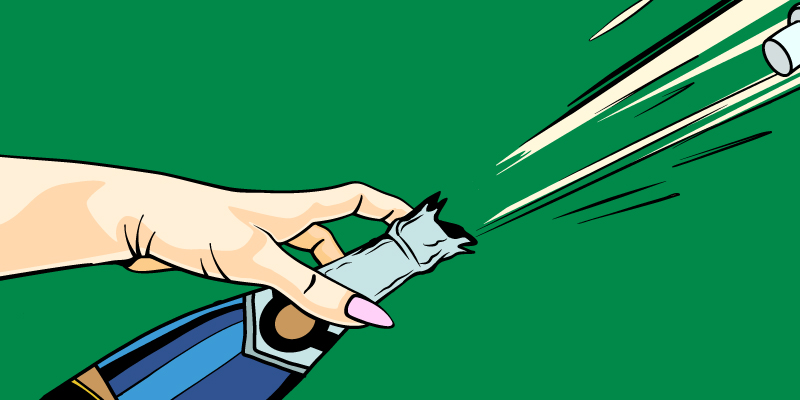Stating the obvious, Champagne bottles are different from your average wine bottle. Their shapes are a little bigger, they feel heavier in our hands, and let’s not forget that huge cork and sparkly foil up top. In addition to these bottle differences, there’s one defining factor on the labels that sticks out as well — most don’t contain a vintage. We’re breaking down why most Champagnes don’t display a year on the bottle.
The vintage (which is just a fancier word for year) on a bottle of wine states the year in which the grapes were harvested. Therefore, if you buy a bottle of 2012 Burgundian Pinot Noir, you know for a fact that those grapes were harvested somewhere between September and October of 2012. Now we know that grapes had to be picked in order to create that bottle of bubbly, and we know that those grapes were picked during a specific year, so why is it not listed?
The most simple answer is consistency. Champagne has one of the toughest climates for producing wine; low levels of sunshine and predominantly cold conditions make it difficult for grapes to ripen. In fact, at 45 to 49 degrees latitude, Champagne barely makes the cut into the acceptable winemaking coordinates (30 to 50 degrees.) Considering the extreme weather conditions that the region may potentially face, it’s quite possible that one terrible storm could wipe out an entire vintage’s worth of grapes. Not only do winemakers in Champagne need to create a product each year to survive, they also need to create a consistent product, thanks to Champagne’s renowned reputation in the global market. To combat this issue, Champagne houses create most of their cuvées as NV, or non-vintage. This signifies that Champagne producers use grapes and must from various vintages to create their cuvées, ensuring its consistency. In other words, this means that each specific producer has a distinct formula comprised of various vintages, resulting in steady flavor profiles year after year.
And those bottles that do contain a year on the label? These are the highly regarded vintage Champagnes. Like other bottles of wine, this signifies that only grapes from that particular year were used to create the wine. Vintage Champagnes are generally few and far between, considering that they are only crafted during years with optimum weather conditions at the chef de cave’s discretion. Should you stumble upon one of these bottles at your next wine tasting, we recommend passing on the spit bucket — these are some special sparkles.

